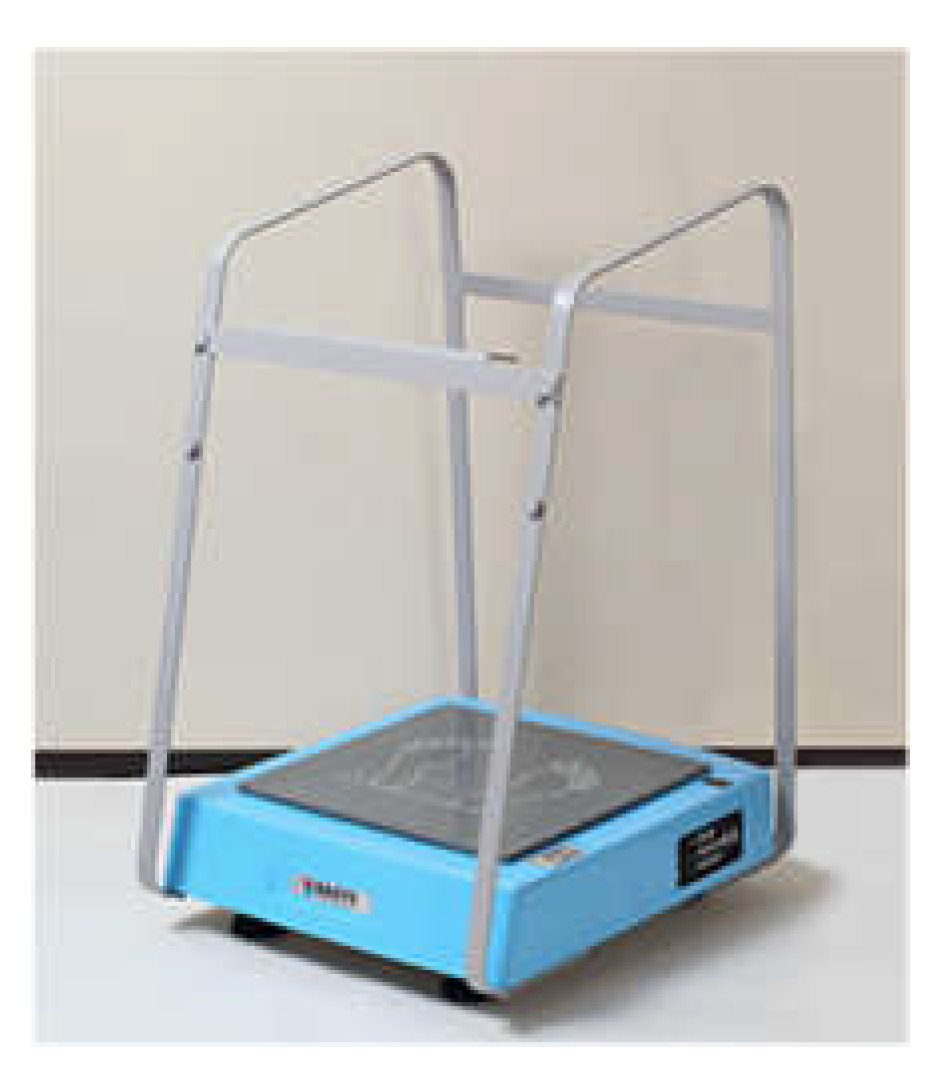Dynamic Motion Analysis Using a Wearable Sensor System in a Stabilometer Installed with Generation Function of Disturbance from a Floor †
Abstract
:1. Introduction
2. Wearable Sensor System
3. Analysis Method
4. Experimental Conditions
5. Results and Discussion
6. Conclusions
References
- Fujiwara, K.; Ikegami, Y. A Study on the Relationship between the Position of the Center of Foot Pressure and the Steadiness of Standing Posture. Jpn. Soc. Phys. Educ. 1981, 26, 137–147. [Google Scholar]
- Suzuki, Y.; Nakata, Y.; Kato, H.; Tanabe, Y.; Iwabuchi, S.; Ishikawa, K. Association between age and dynamic balance capability assessed by use of force plates. Jpn. J. Phys. Fit. Sports Med. 2015, 64, 419–425. [Google Scholar]
- Murai, A. Impendance model of the interactoin between environment and human body and its modification design. In Proceedings of the 40th Annual International Conference of the IEEE Engineering in Medicine and Biology Society (EMBC-40), Honolulu, HI, USA, 17–21 July 2018; pp. 1805–1808. [Google Scholar]
- Adachi, W.; Tsujiuchi, N.; Koizumi, T.; Shiojima, K.; Tsuchiya, Y.; Inoue, Y. Development of Walking Analysis System Using by Motion Sensor with Mobile Force Plate. J. Syst. Des. Dyn. 2012, 6, 655–664. [Google Scholar]
- Hirose, K.; Doki, H.; Kondo, A. Studies on Orientation Measurement in Sports Using Inertial and Magnetic Field Sensors. J. Jpn. Soc. Sports Ind. 2012, 22, 255–262. (In Japanese) [Google Scholar] [CrossRef]
- Kondo, A.; Doki, H.; Hirose, K. A study on the estimation method of 3D posture in body motion measurement using inertial sensors. Trans. Jpn. Soc. Mech. Eng. Ser. C 2013, 79, 2351–2361. (In Japanese) [Google Scholar] [CrossRef]
- Hirose, K.; Doki, H.; Kondo, A. Dynamic analysis and motion measurement of ski turns using inertial and force sensors. Procedia Eng. 2013, 60, 355–360. [Google Scholar] [CrossRef]







Publisher’s Note: MDPI stays neutral with regard to jurisdictional claims in published maps and institutional affiliations. |
© 2020 by the authors. Licensee MDPI, Basel, Switzerland. This article is an open access article distributed under the terms and conditions of the Creative Commons Attribution (CC BY) license (https://creativecommons.org/licenses/by/4.0/).
Share and Cite
Nakamichi, Y.; Tsujiuchi, N.; Ito, A.; Hirose, K.; Kondo, A. Dynamic Motion Analysis Using a Wearable Sensor System in a Stabilometer Installed with Generation Function of Disturbance from a Floor. Proceedings 2020, 49, 164. https://doi.org/10.3390/proceedings2020049164
Nakamichi Y, Tsujiuchi N, Ito A, Hirose K, Kondo A. Dynamic Motion Analysis Using a Wearable Sensor System in a Stabilometer Installed with Generation Function of Disturbance from a Floor. Proceedings. 2020; 49(1):164. https://doi.org/10.3390/proceedings2020049164
Chicago/Turabian StyleNakamichi, Yasuhiro, Nobutaka Tsujiuchi, Akihito Ito, Kiyoshi Hirose, and Akiko Kondo. 2020. "Dynamic Motion Analysis Using a Wearable Sensor System in a Stabilometer Installed with Generation Function of Disturbance from a Floor" Proceedings 49, no. 1: 164. https://doi.org/10.3390/proceedings2020049164



